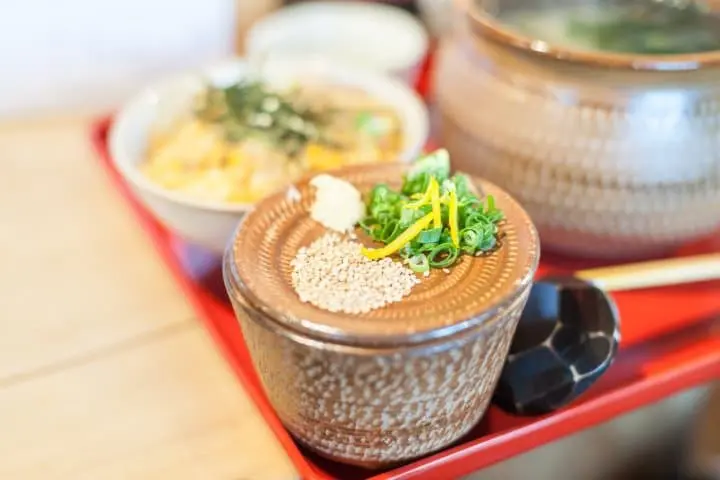Yakumi Condiments In Japanese Cooking

Yakumi, or condiments, are the seasonings and ingredients added to Japanese food. For example, wasabi is added to sushi, and scallions to tofu. Discover the various Japanese condiments called "yakumi" that are frequently used in traditional washoku dishes to add flavor.
Yakumi - Classic Condiments in Japanese Cuisine

Yakumi is a generic name for fruit, vegetables, or dried seafood that is added in cooking to bring out the flavor of the dish or to add a nice aroma. In Japanese cuisine (washoku), it is also used as a garnish to dress-up dishes as well.
Types Of Yakumi

There are many types of yakumi in Japanese cooking. There are no rules regarding what yakumi should be topped with what type of cooking. It varies by ingredients, but you are able to mix and match the type of yakumi to your preference. In this article, we would like to introduce some common ways yakumi are used in Japan.
The most common yakumi are vegetables. In Japan, scallions, mitsuba (Japanese parsley), ginger, myoga (another variety of ginger), wasabi, garlic, shiso (perilla leaf), daikon radish (ground daikon) and seri (Chinese celery) are used in many dishes.
There are cases where non-traditional Japanese yakumi are used, such as basil, cilantro (coriander or Chinese parsley), arugula, mint, and parsley. Fruit like yuzu, kabosu, lemon and, sudachi citrus are popular, as well as plum seeds, sesame, and goji berries.
When seafood is used as a yakumi, most of them tend to be dried products such as bonito flakes, nori seaweed, small fish, and shrimp. Spices are also considered a yakumi as well; spicy pepper, black pepper, sansho pepper and mustard are used as seasoning, but yakumi are meant to be used after the completed dish. It serves the purpose of bringing out the flavors of the ingredients and seasoning.
Japanese Dishes Using Yakumi
Some dishes have the yakumi on the side, but at times it is used to mix into seasonings or sauces.
The hiya-yakko is a prime example of having the yakumi on the side. Hiya-yakko is a simple dish where you pour soy sauce on cold tofu. Here, many people add scallions or ground ginger for extra spicy emphasis on the flavor.
The latter is done for sushi and various noodle dishes. Soba, somen, udon, hiyamugi noodles eaten cold with dipping sauce, many people add scallions, ginger, wasabi, ground daikon radish, spicy pepper flakes and sea weed according to their preference.

The Purpose Of Yakumi
Adding yakumi is not just so you can enjoy the change in flavor and fragrance. Some yakumi have medicinal value and are said to have good effects on the health.
For instance, garlic relieves fatigue, seaweed regulates the functions of the intestines, and perilla leaf contains many vitamins. Ginger helps the digestive process, so it is a perfect yakumi for hot summer days when your appetite might not be there. Myoga has a scent that contains a chemical compound called pinene that is said to refresh your mind and ease stress.
Red pepper has an abundance of capsaicin, which helps the flow of blood and has sweat-producing properties. Many yakumi have strong flavors or scents that boost your appetite, even from a small bite.
Wasabi and green shiso (perilla) also used to disinfect food products as well.
Yakumi are important condiments that support the main dish by protecting its freshness while maintaining our health. By adding just a dash, the yakumi is able to draw out the depth and umami of the dishes. It is a treat found from the wisdom of the people of the past.
Read also
日本への訪日外国人の方が、もっと増えますように!



































![[2026] Top 5 Strawberry Picking Spots in Tokushima, Naruto| Farms and Access Guide for January to May](https://resources.matcha-jp.com/resize/720x2000/2025/03/06-227165.webp)
![[Yamanashi/ Hokuto City] 4 Hot New Spots Opening in 2026](https://resources.matcha-jp.com/resize/720x2000/2025/12/12-252747.webp)


